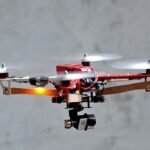Introduction
Overview of Drone Technology
Drone technology has rapidly advanced over the last decade, changing the way we perceive aerial photography, transportation, and even military operations. At its core, a drone—or unmanned aerial vehicle (UAV)—is a flying device controlled remotely or operated autonomously through software. Imagine standing in your backyard, watching a drone gracefully hover above the tree line, capturing stunning images from angles you could hardly reach yourself. This technology isn’t just for hobbyists; it has practical applications across various industries, from surveying and mapping to delivering medical supplies in hard-to-reach areas. The versatility of drones allows them to serve in environments and missions that traditional manned aircraft simply cannot. As you delve deeper into the world of drones, you’ll find that their capabilities extend far beyond entertainment. The integration of advanced technologies, such as 4K cameras and GPS, has made drones indispensable tools for many professionals. Whether it’s for monitoring wildlife, delivering goods, or conducting search and rescue operations, drones have truly become the Swiss Army knives of the skies.
Importance of Payload Capacity
One of the critical factors that determine the effectiveness of a drone is its payload capacity, which refers to the weight a drone can carry while maintaining optimal performance. This factor is vital for expanding the range of applications a drone can undertake. Why exactly is payload capacity so important? Let’s break it down:
- Versatility in Applications: A higher payload capacity allows drones to carry various tools and instruments, enhancing their usability across different sectors. For instance, in agriculture, drones can carry sensors for crop health monitoring or even deliver fertilizers and pesticides.
- Enhanced Performance: Drones with substantial payload capacities can perform more complex tasks. For example, a drone equipped with high-definition cameras or thermal imaging can be used in search and rescue missions, while still carrying medical supplies when needed.
- Economic Impact: Businesses are increasingly turning to drones with robust payload capacities to streamline their operations. For example, delivery drones can carry larger packages, providing faster service and reducing costs. This shift can significantly impact logistics and e-commerce.
Think of your favorite online store offering same-day delivery. Much of that capability comes from employing drones that can carry heavy packages while navigating urban environments efficiently. Moreover, as drone technology continues to evolve, the development of more lightweight materials and powerful motors means that even small drones can efficiently manage higher payloads. This evolution opens up exciting possibilities. In conclusion, understanding the role of payload capacity is key for anyone looking to utilize drone technology, whether it’s for recreational use or professional applications. It’s the bridge that connects the drone’s capabilities to its practical uses, making it an integral aspect of the ongoing drone revolution.
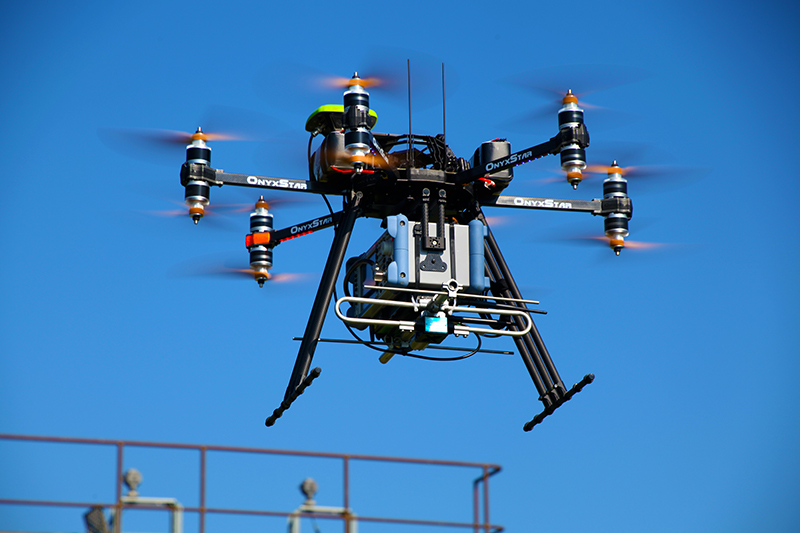
The Evolution of Payload Drones
Historical Development
The journey of payload drones is nothing short of fascinating. It begins with humble roots, tracing back to the early 20th century when the concept of unmanned flight was introduced. Initially, these drones were primarily military tools used for target practice—think of them as the toy models of fighter aircraft. Fast forward to the 1980s, and we witness significant advancements with drones being deployed for surveillance purposes. The introduction of the RQ-2 Pioneer and the MQ-1 Predator marked the shift to more sophisticated technologies capable of carrying varied payloads. As a personal anecdote, I remember the first time I saw a Predator drone showcased at an airshow. Seeing it in action, able to deliver real-time reconnaissance while carrying essential equipment, truly highlighted how far we’ve come. Here’s a quick timeline of key developments in payload drone history:
- 1916: The earliest drones, called “Kettering Bug,” were designed for military target practice.
- 1980s: The introduction of UAVs like the RQ-2 Pioneer signaled the beginning of modern drone use in military operations.
- 2000s: Drones began being used in humanitarian missions and agriculture, opening new avenues for payload applications.
As the 21st century rolled in, civilian applications began to gain traction. The development of consumer-grade drones meant that the technology was no longer reserved for military purposes. Entrepreneurs and innovators began exploring how to leverage UAVs for commercial use—imagine small- to medium-sized drones designed to carry cameras, sensors, and even small packages!
Advancements in Modern Technology
Now, let’s talk about the remarkable advancements that have transformed payload drones into the highly functional machines we have today. The rapid evolution of technology has played a pivotal role in enhancing the capacities and capabilities of drones. Key advancements include:
- Lightweight Materials: The advent of carbon fiber and advanced composite materials has allowed manufacturers to build drones that are both strong and lightweight, improving their payload capacity without sacrificing performance.
- Improved Battery Technology: Enhanced battery life is crucial for maximizing the operational time of drones. Innovations in lithium-polymer batteries have increased flight duration, allowing for more significant payload deliveries on a single charge.
- Smart Navigation Systems: The integration of advanced GPS, machine learning, and obstacle avoidance technologies has revolutionized how drones navigate. These systems enable them to carry hefty loads safely and efficiently, even in challenging environments.
- Enhanced Control Systems: Software advancements have made it easier than ever for operators to monitor and control drones. Features such as live streaming and telemetry allow for real-time data analysis while delivering payloads, which significantly improves operational effectiveness.
In personal experiences with modern drones, it’s exhilarating to see how a device that once seemed like science fiction now seamlessly integrates into various fields. From agriculture using drones to monitor crop health to delivery services flying packages right to your doorstep, the evolution of payload drones has changed our lives significantly. As you can see, the evolution of payload drones has been a blend of historical advancements and modern technological breakthroughs, setting the stage for even greater innovations in the future. This trajectory promises exciting prospects for both personal and commercial applications.
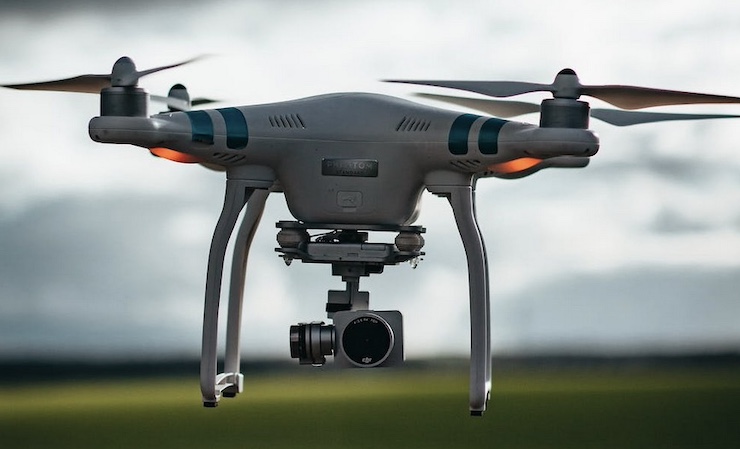
Applications of 10 lb Payload Drones
Surveillance and Security
As we’ve seen, the evolution of drone technology has led to incredible capabilities, particularly with 10 lb payload drones. With their versatile nature, these drones are becoming pivotal in the fields of surveillance and security. Imagine a world where high-definition camera systems can be deployed to watch over critical areas, and you get a glimpse of what these drones can do. In law enforcement and security, 10 lb payload drones are a game changer. They can carry a variety of monitoring equipment, including:
- High-resolution cameras: For real-time surveillance.
- Thermal imaging: To detect heat sources in low-light situations.
- Audio recording devices: For capturing critical sounds and conversations.
For example, during a large public event, local security forces can utilize drones to maintain a comprehensive view of the crowd, quickly identifying any potential threats or emergencies. I recall attending a music festival where drones were used to monitor large crowds. The seamless integration of drone technology made everyone feel safer, knowing that security was watching over them from above. Applications extend beyond large events. Consider outdoor facilities like warehouses or parking lots, where drones can perform regular patrols, keeping a watchful eye on the premises. Their ability to easily cover large areas means that security teams can respond faster to any incidents, proving invaluable.
Agriculture and Crop Monitoring
Transitioning to another significant application, the use of 10 lb payload drones in agriculture is revolutionizing how farmers monitor their crops. Imagine being a farmer who can scout sprawling fields without stepping out of your tractor. The capability to carry various sensors and cameras allows for more effective crop management. Some of the key advantages of using drones in agriculture include:
- Crop Health Monitoring: Drones equipped with multispectral cameras can analyze vegetation indices, identifying areas of stress or disease.
- Precision Agriculture: By targeting specific areas needing enhancement, farmers can apply fertilizers or pesticides more effectively, reducing waste and cost.
- Irrigation Management: Drones can assess moisture levels across different field zones, helping farmers optimize water usage.
I once visited a farm that had recently adopted a drone to monitor its crops. The farmer shared how the drone’s real-time imaging helped him detect issues before they became larger problems, leading to healthier yields. He expressed how it relieves the back-breaking physical labor associated with manually checking large fields—what a relief for those early mornings! Furthermore, with a 10 lb payload, these drones can carry seed dispensers, enabling them to cover large areas with precision. This technology not only enhances productivity but also fosters sustainable practices in agriculture. In essence, the applications of 10 lb payload drones stretch across various industries, enhancing security and transforming agricultural practices. Offering both efficiency and effectiveness, these drones are paving the way for innovative solutions that resonate with both commercial and personal use.
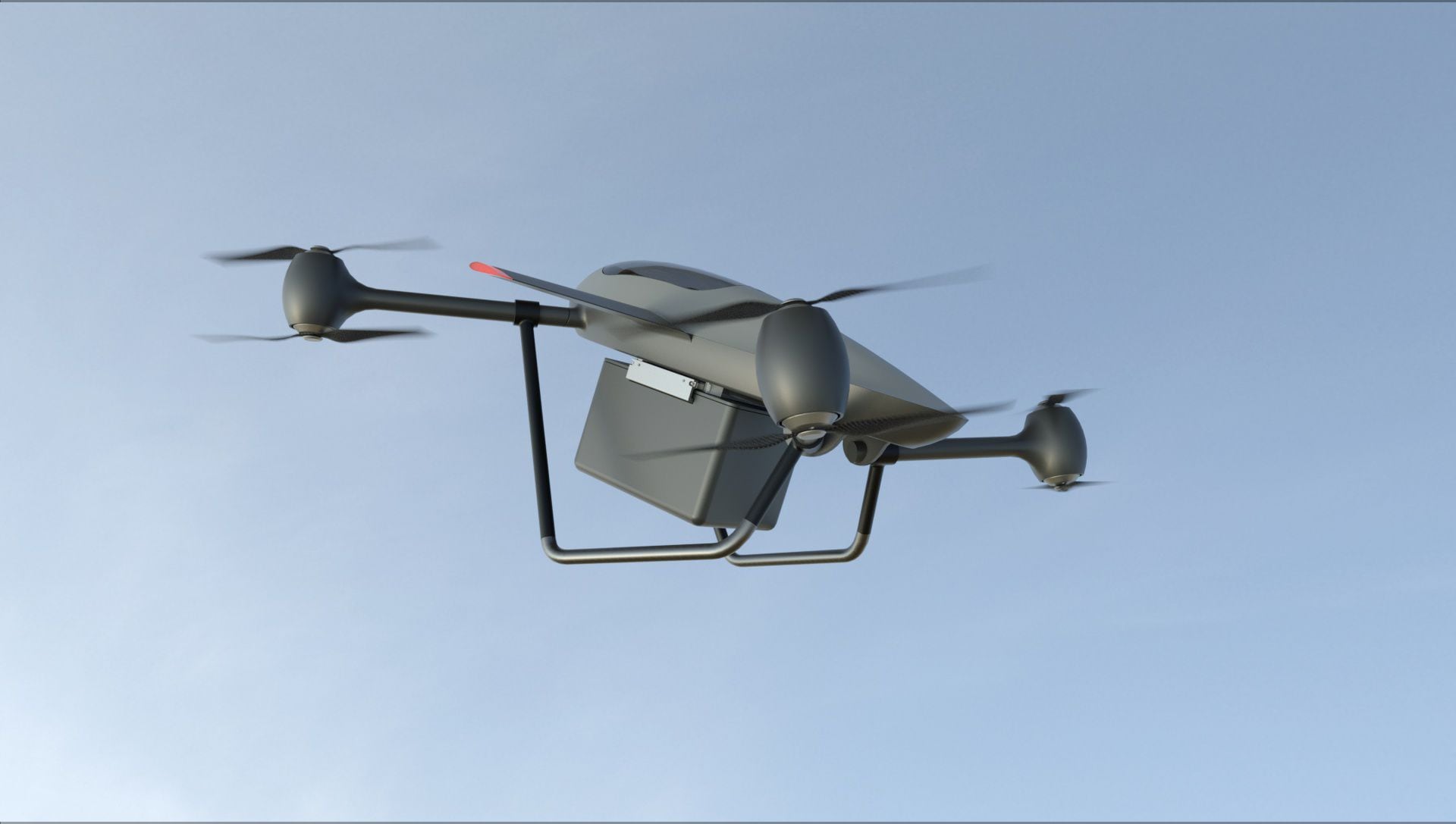
Benefits of Using 10 lb Payload Drones
Efficiency and Cost-Effectiveness
As we explore the myriad applications of 10 lb payload drones, it’s clear that their numerous benefits set them apart in both the commercial and personal sectors. One of the standout advantages is the remarkable efficiency and cost-effectiveness they bring to operations. Imagine a construction site where a team needs to monitor progress and materials. Instead of assigning several employees to physically walk the site, a single drone can be launched to inspect conditions from above. This not only frees up valuable human resources but also speeds up the inspection process. Here’s how 10 lb payload drones contribute to efficiency:
- Faster Data Collection: Drones can cover large areas in a fraction of the time it would take a person or vehicle. For example, assessing crop health or surveying land can now be done in a matter of hours instead of days.
- Reduced Labor Costs: By minimizing the need for ground teams, businesses can allocate their resources more strategically. This cost reduction can lead to improved profit margins and more competitive pricing.
- Increased Productivity: Drones automate routine tasks, allowing teams to focus on innovation and improvement rather than monotonous monitoring. This change can lead to increased output, enhancing overall performance.
From my experience visiting local farms, farmers who adopted drone technology often recounted how they dramatically reduced operational costs. One farmer shared that by using drones for crop monitoring, he saved over 30% on labor costs alone, all while improving the accuracy of his assessments. All in all, integrating drones into operational workflows can signal a significant transformation in business efficiency.
Safety and Accessibility
Shifting gears to another critical advantage, 10 lb payload drones significantly enhance safety and accessibility in various fields. Think about industries like construction or disaster management, where safety measures are paramount. Drones can operate in hazardous environments where traditional ground-level inspections would be risky. For example:
- Construction Sites: Inspecting high structures or dangerous areas can put workers at risk. Drones equipped with cameras allow for remote inspections, ensuring that if a problem arises, no one is in harm’s way.
- Search and Rescue: Imagine a rescue operation in rugged terrains or disaster-struck areas. Drones can quickly access these locations, providing crucial real-time data without putting rescue teams in jeopardy. I’ve seen this firsthand during community search efforts, where drones provided updates on missing persons in ways that ground teams simply couldn’t manage.
- Improved Accessibility: Drones can reach areas that are difficult for humans to access, such as rooftops, dense forests, or remote islands, making them invaluable in various contexts.
In terms of operational safety, the data collected by drones often leads to better decision-making, as operators can analyze situations remotely and implement necessary measures more effectively. Overall, the benefits of using 10 lb payload drones extend beyond just functional advantages; they foster a new approach to conducting business. By driving efficiency, reducing costs, enhancing safety, and providing access to difficult-to-reach areas, these drones are proving to be essential tools across multiple industries. It’s exciting to see where this technology will take us next!
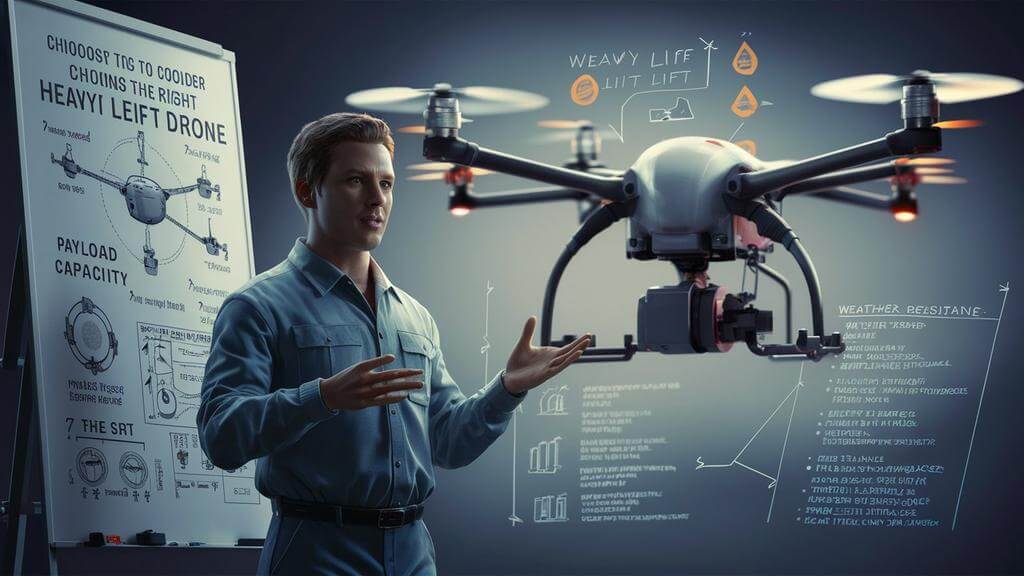
Regulatory Guidelines for 10 lb Payload Drones
FAA Regulations in the United States
As we delve into the regulatory landscape governing 10 lb payload drones, understanding the rules is critical for safe and legal operation. In the United States, the Federal Aviation Administration (FAA) oversees all things related to aviation, including drone flight. Their regulations have been developed to ensure the safety of both drone operators and others in the airspace. To operate a drone that weighs less than 55 lbs (which includes your 10 lb payload drone), you’ll need to follow specific guidelines under Part 107 of the FAA regulations. Here’s a handy overview:
- Commercial Use: If you plan to use your drone for commercial purposes—like mapping, photography, or surveillance—you must have a Remote Pilot Certificate.
- Maximum Altitude: Drones must fly at or below 400 feet above ground level, which helps prevent collisions with manned aircraft.
- Line of Sight: Operators must maintain visual line-of-sight with their drone at all times. This guideline helps in making quick decisions while flying.
- No Flying over People: You cannot fly over people who are not involved in the operation unless specific conditions are met.
Interestingly, I recently attended a drone demonstration event where the FAA had a booth. The representatives emphasized the importance of compliance, noting several examples where improper operations led to accidents. It was eye-opening to see how following these regulations not only protects the operator but the public as well. Understanding these regulations will help ensure you operate within the law and maximize the potential of your 10 lb payload drone.
International Aviation Laws
As you look beyond the U.S. borders, the regulatory framework for drones can vary dramatically from country to country. International aviation laws are often guided by the International Civil Aviation Organization (ICAO), but each nation tailors its regulations to fit local requirements. For instance, in the European Union, the European Union Aviation Safety Agency (EASA) has mandated a comprehensive set of drone regulations, which include:
- Registration: All drones must be registered if they exceed a certain weight limit, typically set around 250 grams. This includes many consumer drones.
- Categorized Operations: The regulations categorize drone operations into three sub-regions: open, specific, and certified. Each category has different rules based on the potential risks involved.
- Training: Operators may be required to undergo training and receive certifications for specific types of drone operations.
When traveling abroad with your drone, it’s essential to be aware of these guidelines. I remember discussing drone regulations with a fellow drone enthusiast who traveled to Europe. He learned the hard way that not all countries welcome drones with open arms, leading to some frustrating experiences when he inadvertently flew in restricted airspace. Moreover, certain countries have stringent privacy laws, which can complicate the operation of cameras or sensors aboard drones. Always check local regulations before embarking on an international journey with your drone. In summary, adhering to both FAA regulations in the United States and international laws ensures responsible drone operation. Being well-informed not only promotes safety but also enhances the overall experience of operating a 10 lb payload drone, wherever your adventures take you.
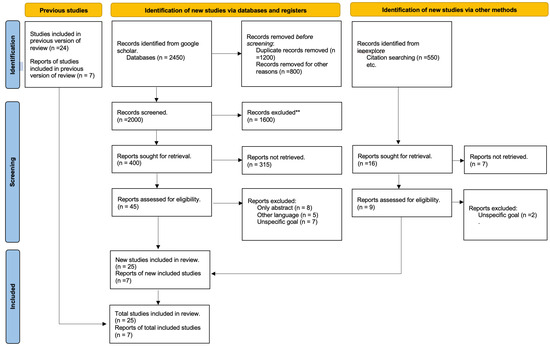
Challenges and Limitations
Battery Life and Flight Time
As we explore the dynamic world of 10 lb payload drones, it’s essential to also examine the challenges and limitations that come with this technology. One of the most significant hurdles drone operators face is the challenge of battery life and flight time. While advancements in battery technologies have enabled drones to fly for longer durations, many still depend on lithium-polymer (LiPo) batteries that typically provide limited flight times. Here’s a breakdown of the challenges related to battery life:
- Limited Flight Duration: Most drones can only stay airborne for about 20 to 30 minutes per charge, depending on their payload. For instance, if you’re expecting the drone to carry heavy sensors or cameras, flight time might drastically reduce to under 20 minutes.
- Charging Infrastructure: In remote areas or large farms, finding suitable charging infrastructure can be problematic. If your drone runs out of battery, it can be a hassle to bring it back to a power source.
- Battery Management: Users must also monitor battery health. Over time, batteries can degrade, impacting not only flight time but also safety. Proper care and management are crucial for ensuring optimal performance.
I remember once while assisting a photographer during a landscape shoot, the drone unexpectedly lost power after a short flight due to a battery miscalculation. We had to wait nearly an hour for it to recharge before it could take off again. This experience highlighted the importance of planning and understanding battery limitations, especially during critical operations.
Weather Conditions and Environmental Factors
Another challenge that cannot be overlooked is the impact of weather conditions and environmental factors on drone operations. While drones are resilient pieces of technology, they are not invincible and can be heavily affected by various environmental elements. Some key weather challenges include:
- Wind: High winds can severely impact a drone’s stability and control. Even a little breeze can push your drone off course, which could be problematic, especially while handling sensitive equipment.
- Rain and Precipitation: Most consumer drones are not waterproof. Flying in rain can not only damage the electronics but also affect the overall performance. For example, a small amount of moisture can cause the sensors to malfunction, leading to incorrect data collection.
- Temperature Extremes: Drones operate best within specific temperature ranges. Extreme cold can shorten battery life, while heat can lead to overheating and loss of performance.
I once witnessed a drone operator’s frustration during a cloudy day while trying to capture aerial photos. The visibility was poor, and the drone struggled to maintain a connection with the controller. Conditions forced us to postpone the shoot and wait for clearer skies. Furthermore, the topography of the area can affect drone flights—forested regions may block GPS signals, and urban areas with tall buildings can create a canyon effect, making navigation challenging. In conclusion, while 10 lb payload drones offer remarkable advantages, they do come with challenges, particularly regarding battery life and environmental factors. Understanding and mitigating these limitations will not only enhance your experience but also maximize the effectiveness of your operations. Whether you’re an aspiring enthusiast or a seasoned professional, being aware of these challenges can help you make the most of your drone adventures!

Future Trends in Payload Drone Technology
Artificial Intelligence Integration
As we look toward the future of payload drone technology, one of the most exciting developments is the integration of artificial intelligence (AI). Imagine drones that can not only navigate but also make decisions on their own, adjusting flight paths in real-time based on their surroundings. It’s an exhilarating prospect! The integration of AI can lead to significant advancements in the following areas:
- Autonomous Flight: With AI, drones can automate their flight plans, allowing them to adapt and respond to environmental factors without human intervention. For instance, drones could dynamically adjust their route to avoid obstacles or unfavorable weather conditions.
- Enhanced Data Analysis: AI algorithms can process vast amounts of data collected during flights, enabling real-time analysis and decision-making. This ability is crucial in applications like agriculture, where drones can autonomously assess crop health and determine specific treatment areas.
- Improved Object Detection: With machine learning capabilities, drones equipped with AI can better identify and classify objects in their vicinity, enhancing their use in surveillance and security applications.
Personally, I’ve been captivated by a recent demonstration of AI-powered drones at a tech expo. They showcased a drone that could identify and track moving objects while adjusting its flight path to maintain a safe distance. This kind of technology not only makes drone operation more efficient but also opens the door for new uses, such as delivering packages in busy urban environments without colliding with pedestrians or obstacles. The potential for bad weather scenarios also improves dramatically, as AI can help drones make real-time decisions about flight safety. As such innovations continue to roll out, we’ll likely see a fundamental shift in how we utilize payload drones across numerous industries.
Enhanced Payload Capacity Features
Another promising trend is the development of enhanced payload capacity features in drones. As technology evolves, manufacturers are continually striving to increase the weight that drones can carry while maintaining flight stability, efficiency, and safety. Here’s how these advancements are shaping up:
- Lightweight Materials: The focus on using lightweight composites and materials, like carbon fiber, is creating drones capable of carrying heavier payloads without significantly impacting their performance.
- Modular Design: Several manufacturers are now exploring modular designs that allow for the easy attachment and detachment of payloads. This flexibility means drones can switch between various sensors, cameras, or delivery mechanisms quickly.
- Increased Battery Efficiency: Innovations in battery technology are enabling drones to carry more weight while still maintaining reasonable flight times. High-density batteries and energy-efficient propulsion systems are paving the way for this enhancement.
For example, I once visited a drone manufacturer where they demonstrated a modular drone capable of switching between delivering medical supplies and performing agricultural surveys. Both tasks required different payloads, and the modular design allowed for seamless transitions. This versatility is invaluable, especially for organizations looking to maximize operations with limited resources. In conclusion, the future of payload drone technology is bright, with exciting advancements in AI integration and enhanced payload capacity features on the horizon. These trends promise to redefine how we think about and utilize drones, paving the way for applications that we have yet to fully imagine. Embracing this technology not only holds the potential for increased efficiency but also opens doors to many new possibilities across various industries. So, buckle up and get ready for a thrilling ride into the future of drone technology!

Case Studies: Successful Implementation of 10 lb Payload Drones
Search and Rescue Missions
The use of 10 lb payload drones has made a groundbreaking impact in search and rescue missions, enhancing the efficiency and effectiveness of operations. One noteworthy case study involved a mountain rescue team deployed to find a hiker who had gone missing in a dense forest. Equipped with thermal imaging cameras, the drone was launched to cover the rugged terrain quickly. Here’s how the drone made a remarkable difference:
- Rapid Scanning: The drone’s ability to hover over hard-to-reach areas allowed the search team to cover vast territories in a short time. What would take hours of searching on foot was accomplished in mere minutes.
- Real-time Data: The drone provided live video feeds back to rescue coordinators, allowing them to analyze the terrain and make informed decisions on where to deploy their ground teams.
- Finding Individuals: In this particular incident, the drone’s thermal imaging capabilities detected the heat signature of the hiker beneath the dense canopy of trees. The drone directed rescuers to the exact location, allowing them to reach the hiker within minutes.
In speaking with the rescue team members afterward, they expressed how the drone became an invaluable tool that not only saved time but also potentially saved a life. This real-life example highlights the powerful impact that technology can have in critical situations, showcasing the crucial role that 10 lb payload drones play in modern rescue missions.
Infrastructure Inspections
Another fascinating application of 10 lb payload drones is in infrastructure inspections. These drones have transformed how we assess bridges, power lines, and other structures that can be costly and dangerous to inspect using traditional methods. A prominent case study from a major utility company showcases just how effective this technology can be. In this instance, the company used drones to inspect power lines across a sprawling network in a rural area. The key benefits observed during their operations included:
- Cost Savings: By replacing manned inspection teams with drones, the utility company significantly reduced labor costs and minimized the need for road closures during inspections.
- Enhanced Safety: Inspecting power lines often requires workers to climb utility poles or fly in helicopters. The use of drones mitigated risks, keeping personnel safe while still collecting critical data.
- Detailed Imaging: The drones were equipped with high-definition cameras that captured detailed images of potential issues, like wear and tear, that might have been missed during quick visual checks from the ground.
I spoke with an engineer from the utility company who shared that they could perform inspections more frequently and accurately. The drone’s capabilities highlighted issues they would have typically overlooked, allowing maintenance crews to address concerns before they escalated into costly failures. Overall, the successful implementation of 10 lb payload drones in both search and rescue missions and infrastructure inspections illustrates their versatility and transformative potential across various sectors. These case studies not only showcase the impressive technology at play but also reinforce the idea that these drones can truly enhance efficiency and safety in crucial operations. As more industries recognize their value, the applications are sure to expand, paving the way for even greater innovations in the future!
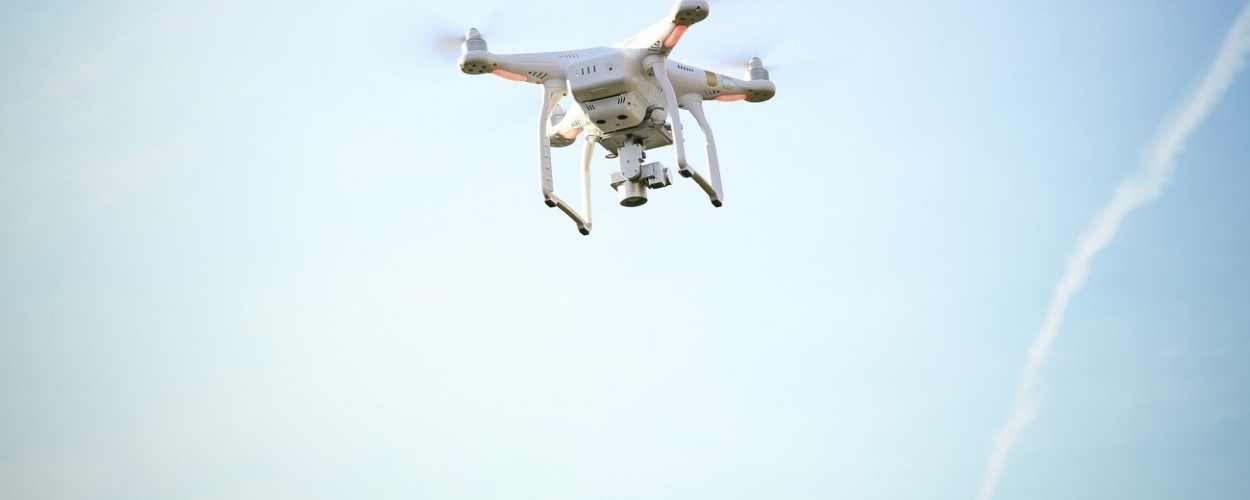
Training and Certification for Operating Payload Drones
Pilot Certification Requirements
When it comes to operating 10 lb payload drones, proper training and certification are not just beneficial—they’re essential. The FAA has established clear pilot certification requirements to ensure that drone operators have the knowledge and skills necessary for safe and responsible operation. To get started, here are the key requirements for obtaining a Remote Pilot Certificate under FAA Part 107:
- Age Requirement: You must be at least 16 years old to apply.
- Knowledge Test: Applicants must pass the FAA’s Aeronautical Knowledge Test, which covers topics like airspace classification, weather patterns, and flight operations. Preparation can involve online courses or study materials—don’t worry; many guides are available to help you succeed.
- Medical Fitness: While there is no formal medical exam, you must declare that you are in a physically and mentally fit condition to pilot a drone.
- English Proficiency: As with all aviation regulations, you must be able to read, write, and understand English, ensuring clear communication and safety.
I remember when I pursued my Remote Pilot Certificate; the preparation was intense but fulfilling. Joining a local study group allowed me to exchange insights with other aspiring pilots, and it made the learning process much more enjoyable! Once you pass your test, you’ll be able to fly drones commercially, but it’s important to stay current. The FAA requires certificate holders to renew their certification every two years, which involves either a new knowledge test or completing specific training.
Hands-On Training Programs
While classroom knowledge is invaluable, practical experience is crucial for safe drone operation. Many organizations and educational institutions now offer hands-on training programs tailored to various skill levels. Here’s what you can expect from these programs:
- Flight Training: In a hands-on training program, you’ll have the opportunity to operate a drone under the guidance of experienced instructors. This training typically covers basic maneuvers, emergency procedures, and how to manage payloads effectively.
- Real-World Scenarios: Many programs simulate real-world scenarios, allowing you to practice searches, surveillance, or agricultural monitoring in a controlled environment. This experience is invaluable for building confidence and skill.
- Safety Protocols: Learning about safety best practices in the field is critical. Programs often dedicate significant time to reviewing regulations, risk assessment, and emergency response strategies.
- Tailored Courses: Depending on your intended use of the drone—whether for commercial projects, agriculture, or public safety—there are tailored training programs that cater to specific needs and applications.
One of my friends who enrolled in a hands-on training program shared their experience: they practiced flying in various conditions, learning how to handle drones in both calm and windy scenarios. The training equipped them with the skills needed for real-world applications and prepared them to tackle challenges confidently. In conclusion, ensuring that you meet pilot certification requirements and completing hands-on training programs are essential steps for anyone looking to operate 10 lb payload drones safely and effectively. These steps not only equip you with the necessary skills and knowledge but also help foster a responsible drone community. Whether you’re aiming for commercial use or simply want to enjoy flying, investing in proper training is an essential first step toward becoming a proficient drone pilot!
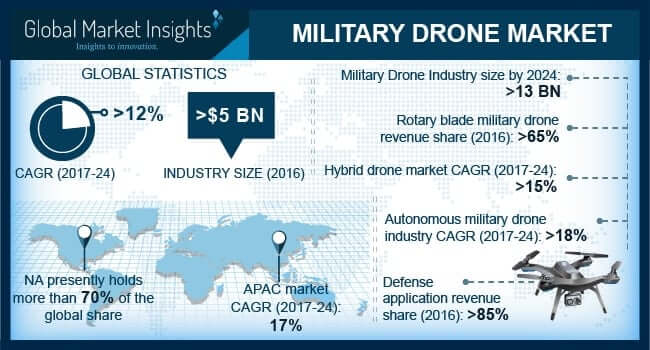
Conclusion
Recap of Drone’s Potential
Reflecting on the journey we’ve taken through the fascinating world of 10 lb payload drones, it’s clear that their potential is immense. These versatile machines are not merely toys or gadgets; they have become indispensable tools across various industries. From our exploration of search and rescue missions, where drones save lives by navigating rugged terrain, to agriculture, where they enable farmers to monitor crop health and optimize resources, the applications are both diverse and impactful. We’ve seen how drones enhance surveillance and security, providing real-time data that improves situational awareness and safety. Moreover, their role in infrastructure inspections is revolutionizing the maintenance of critical structures, ensuring safety and efficiency. As someone who’s interacted with drones in several contexts, I’ve witnessed firsthand how they can transform operations. I recall a local agriculture show where farmers exchanged stories about their newfound productivity, thanks to drones that could quickly assess vast fields and provide much-needed data. This synergy of technology and practical application highlights the true potential that lies within these flying machines.
Future Implications and Opportunities
Looking ahead, the future of payload drone technology is bursting with possibilities. The developments we’ve discussed, particularly in artificial intelligence integration and enhanced payload capacity features, signal a transformative era for drone applications. Consider some exciting future implications:
- Expansion into New Sectors: As regulations evolve and technology matures, we can expect to see drones making their way into sectors like healthcare, where they may deliver medicine to rural areas, or environmental monitoring, where they can analyze ecosystems without disturbing habitats.
- Smart Autonomous Drones: We might soon encounter drones that can independently assess conditions and execute complex missions autonomously. Imagine a drone that can identify infrastructure damage and alert maintenance teams without human oversight. This fascinating prospect could lead to safer, more efficient operations across various fields.
- Innovative Business Models: Drone services could evolve into comprehensive business models that offer everything from delivery services to drones for hire in special events like weddings or promotional videos. As an entrepreneur, I can envision scenarios where small businesses leverage drone technology to enhance marketing efforts or operational efficiency.
In summary, 10 lb payload drones represent a convergence of technology and creativity, offering solutions that enhance productivity and safety while expanding the horizons of what is possible. The ongoing developments in this space suggest a promising future filled with opportunities for individuals and industries alike. As we embrace these innovations, it’s an exciting time to be involved in the world of drones, whether you’re a hobbyist, business owner, or industry professional. The sky’s the limit!


